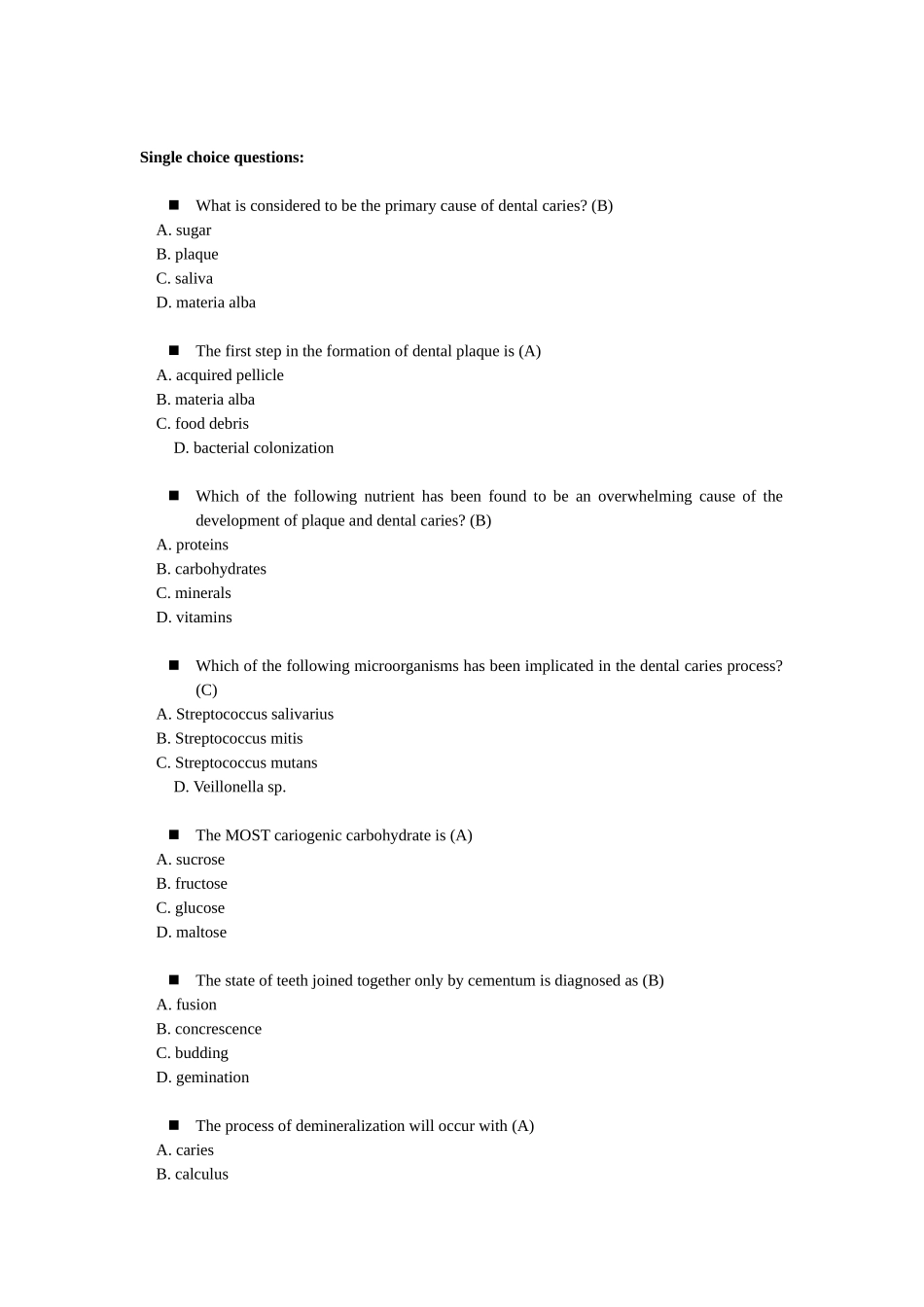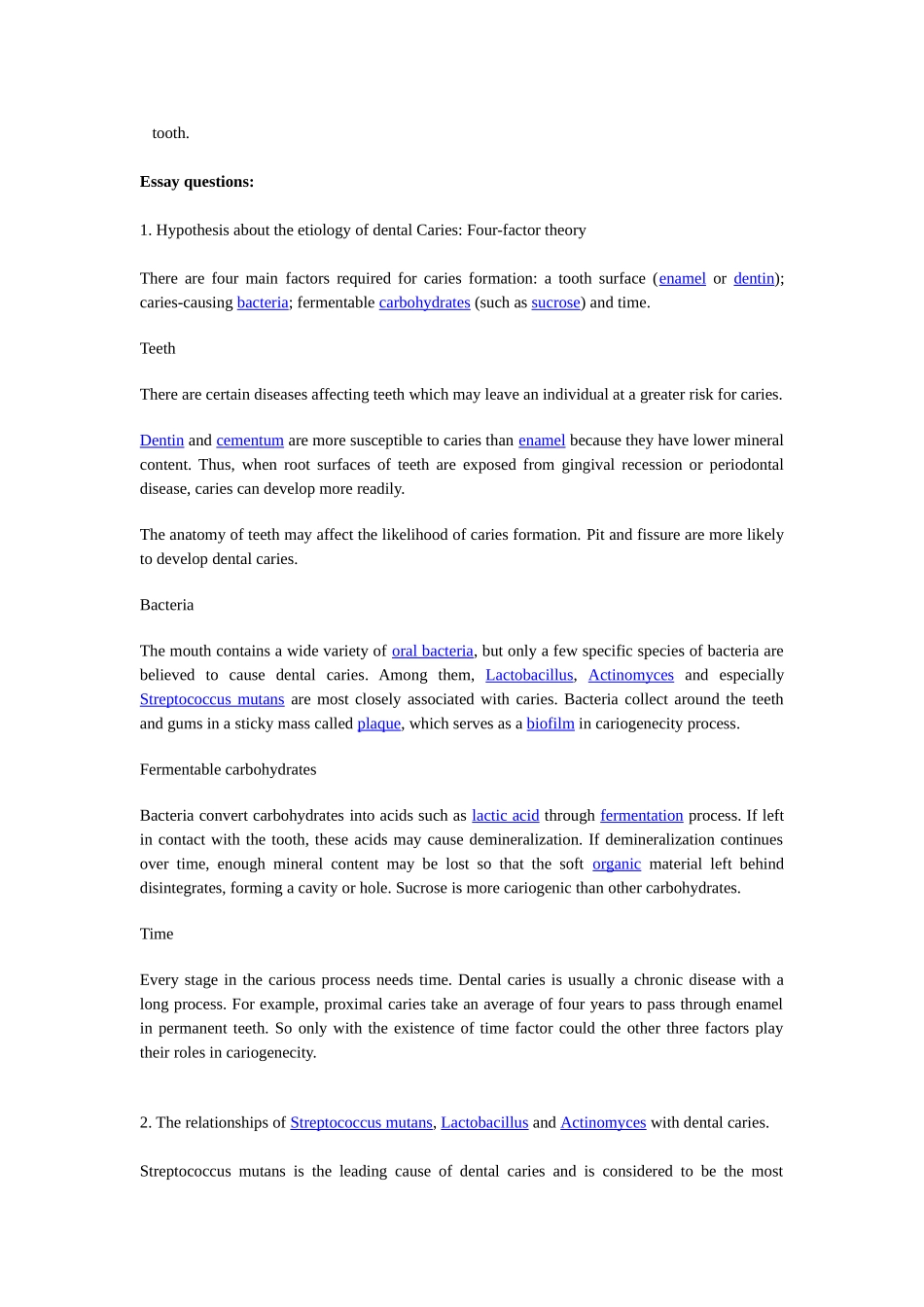Single choice questions:What is considered to be the primary cause of dental caries? (B) A. sugar B. plaque C. saliva D. materia albaThe first step in the formation of dental plaque is (A) A. acquired pellicle B. materia alba C. food debrisD. bacterial colonizationWhich of the following nutrient has been found to be an overwhelming cause of the development of plaque and dental caries? (B) A. proteins B. carbohydrates C. minerals D. vitaminsWhich of the following microorganisms has been implicated in the dental caries process? (C) A. Streptococcus salivarius B. Streptococcus mitis C. Streptococcus mutansD. Veillonella sp.The MOST cariogenic carbohydrate is (A) A. sucrose B. fructose C. glucose D. maltoseThe state of teeth joined together only by cementum is diagnosed as (B) A. fusion B. concrescence C. budding D. geminationThe process of demineralization will occur with (A) A. caries B. calculus C. green stain D. yellow stainDental handpieces must be sterilized (B) A. once a day B. after each patient C. lubricated once a day D. after working on a patient with a known communicable diseaseThe most frequently isolated microorganism on root surface caries is (C) A. Lactobacillus B. Streptococcus mutans C. Actinomyces D. Streptococcus mitisThe ancient book recorded a silver amalgam paste for dental fillings over 14 centuries ago was written by (D) A. Egyptians B. Greeks C. Romans D. ChineseShort note questions:1. DMF index:An index for managing statistically the number of decayed, missing, or filled teeth in the oral cavity. 2. Trends of dental caries in epidemiology The prevalence rate has decreased in developed countries, and this decline is usually attributed to increasingly better or...


